What Is Supply Chain Strategy? Key Principles Explained

Unveil the core of efficient logistics with 'What is Supply Chain Strategy?'—a guide to optimizing operations and boosting business growth.
Unlocking the Benefits of Strategic Supply Management
In today’s dynamic market, understanding and implementing a robust supply chain strategy is vital for your company’s success. This strategy is more than just handling logistics; it’s about creating a cohesive system that aligns with your business’s core objectives and customer needs.
Streamlining Operations for Efficiency
A supply chain strategy that’s well-crafted can transform your operations by streamlining processes and removing inefficiencies. This means your products move smoothly from suppliers to customers, reducing waste and costs while improving speed.
Key Areas of Focus
- Demand Forecasting: Accurate predictions lead to better stock management.
- Supplier Management: Strong relationships ensure quality and dependability.
- Logistics Optimization: Efficient transportation reduces delays and expenses.
Enhancing Customer Satisfaction
Customers expect quick, reliable service. A fine-tuned supply chain delivers this by ensuring products are always available and reach customers swiftly. Happy customers often translate to repeat business and positive word-of-mouth.
Customer-Centric Strategies
- Personalized Service: Tailoring experiences to customer preferences.
- Real-Time Tracking: Keeping customers informed about their orders.
Embracing Technological Advancements
Technology plays a pivotal role in modern supply chains. From AI tools for business that predict demand to ERP AI chatbots that handle customer queries, tech can elevate your supply chain to new heights.
Technology Integration
- Data Analytics: For deeper insights and informed decision-making.
- Automation: To speed up repetitive tasks and reduce human error.
Comparative Analysis of Supply Chain Tools
It’s essential to choose the right tools to support your supply chain strategy. Below is a comparison of features from leading supply chain management software:
| Feature | Ozma | Zoho | Odoo |
|---|---|---|---|
| Real-Time Inventory Tracking | ✓ | ✓ | ✓ |
| Supplier Performance Metrics | ✓ | x | x |
| Automated Reordering System | ✓ | x | x |
| Advanced Reporting & Analytics | ✓ | ✓ | x |
| Multi-Location Management | ✓ | ✓ | ✓ |
As you can see, Ozma offers a comprehensive suite of features that can bolster your supply chain efficiency.
By focusing on these critical aspects, your business can unlock the full potential of your supply chain, ensuring you stay ahead of the curve and deliver exceptional value to your customers. Implementing a sound supply chain strategy is a game-changer for businesses looking to scale and sustain in a competitive landscape.
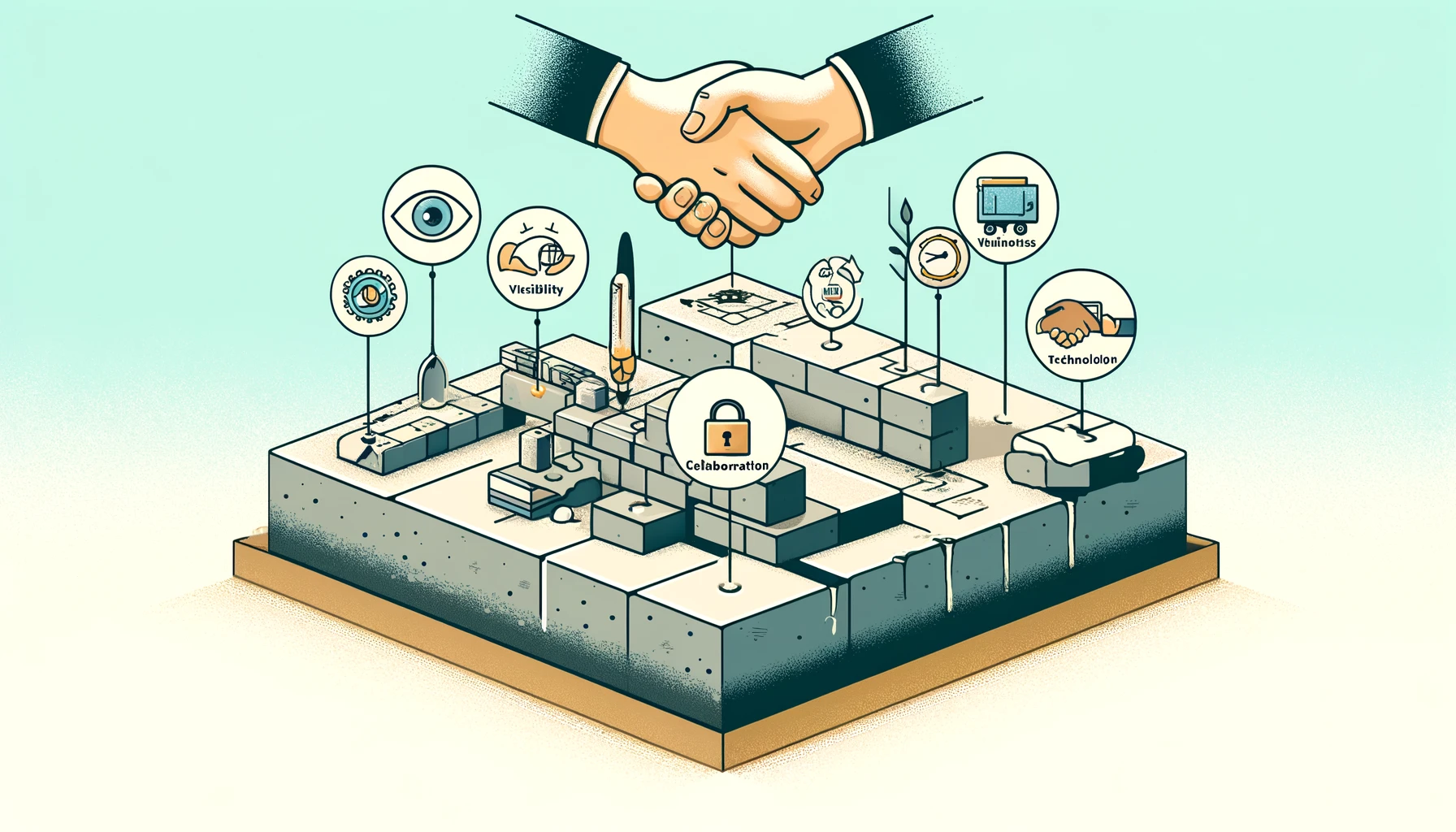
Remember, the key to a successful supply chain strategy lies in its execution. Ensure you have the right team, technology, and tools in place to reap the benefits of strategic supply management.
Crafting a Cohesive Supply Network Blueprint
Creating a well-defined supply network blueprint is akin to drawing a detailed map for your company’s journey towards operational excellence. This blueprint is the foundation upon which a resilient and responsive supply chain strategy is built, ensuring that every element of your supply network works in harmony to support your overarching business goals.
Identifying Core Components
The first step in crafting your blueprint is to identify the core components of your supply chain. This includes everything from sourcing materials to delivering the final product to the customer. By recognizing each segment, you can start to see how they interconnect and where improvements can be made.
Core Supply Chain Components
- Sourcing: Selecting suppliers that align with your company’s values and quality standards.
- Manufacturing: Streamlining production to be both cost-effective and agile.
- Distribution: Ensuring that products are delivered in a timely and cost-efficient manner.
Integration for Seamless Operations
Once the core components are outlined, the next step is to integrate them into a seamless operation. This requires a holistic approach, where communication and coordination are paramount.
Integration Strategies
- Cross-Functional Teams: Encourage collaboration between departments.
- Centralized Data Systems: Implement a unified system for real-time data access.
Leveraging Technology for Connectivity
In the digital age, technology is the glue that holds your supply network together. From integrated business solutions to low-code ERP, investing in the right technology can provide the connectivity needed to make your blueprint a reality.
Technological Enhancements
- Cloud Computing: For scalable and accessible data storage.
- Internet of Things (IoT): To monitor and manage assets in real-time.
Measuring Success with Metrics
A blueprint is only as good as the results it produces. Establishing key performance indicators (KPIs) will help you measure the effectiveness of your supply chain strategy and make necessary adjustments.
Key Performance Indicators
- Delivery Times: How quickly products reach customers.
- Inventory Turnover: The rate at which inventory is sold and replaced.
- Cost Reduction: Savings achieved through streamlined operations.
By meticulously designing your supply network blueprint and continuously refining it, you position your business to respond swiftly to market changes and customer demands. Your blueprint is not just a plan; it’s a strategic asset that drives growth and competitive advantage.
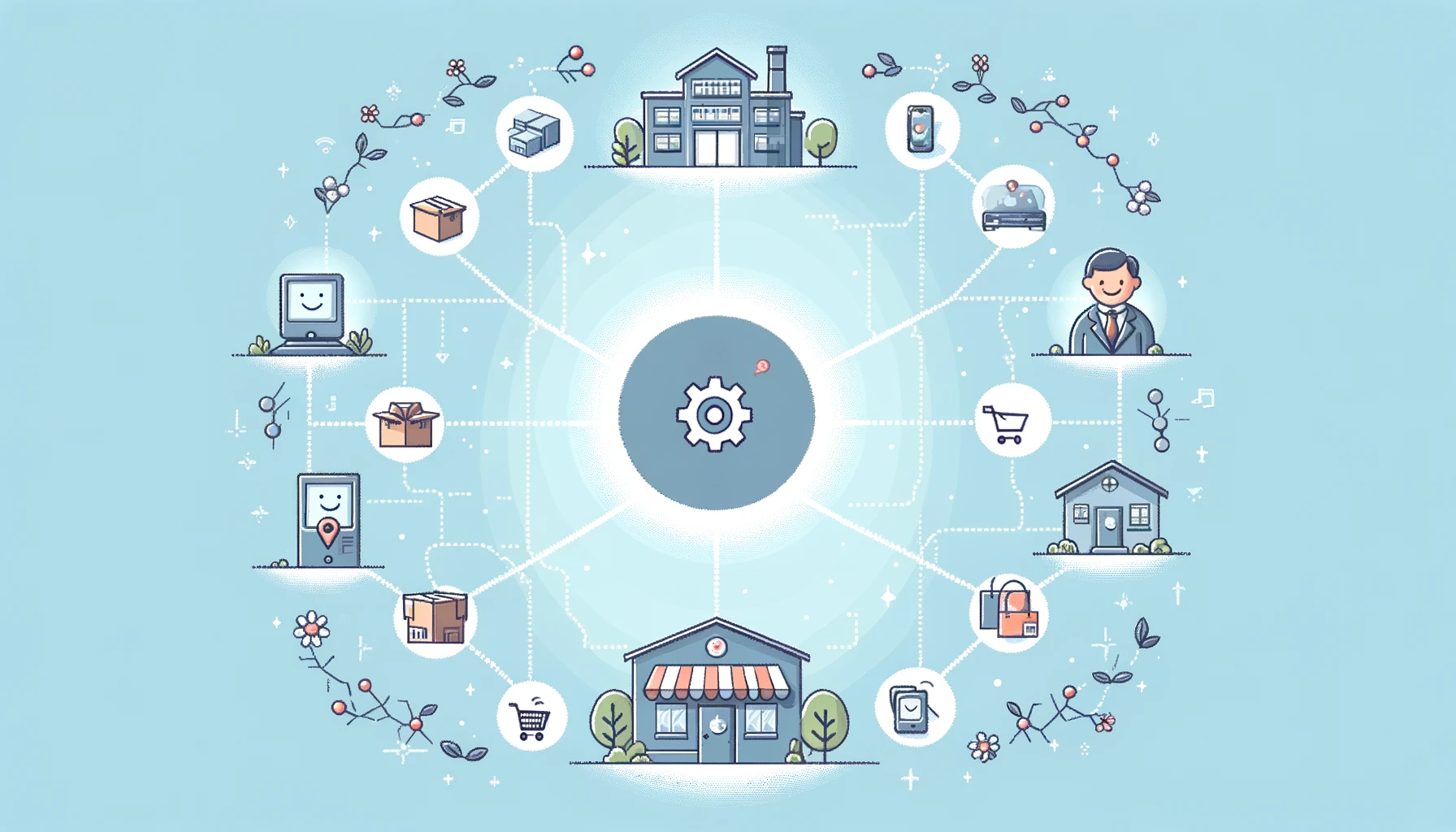
Embrace the journey of optimizing your supply chain with a clear, actionable blueprint, and watch as your business reaches new heights of efficiency and customer satisfaction. With the right strategy in place, the possibilities are endless.
The Business Advantages of Streamlined Logistics
Efficiency in logistics is not just a cost-saving measure; it’s a strategic advantage that can significantly impact your bottom line. When you streamline your logistics, you’re setting up your business for enhanced performance and customer satisfaction. Let’s delve into the tangible benefits that a well-oiled logistics machine can offer.
Quick and Cost-Effective Delivery
With a streamlined supply chain, products move faster and more reliably, which means you can promise and deliver quicker shipping times. This speed not only delights customers but also reduces holding costs, leading to a healthier cash flow.
Benefits of Speedy Logistics
- Reduced inventory costs
- Faster market response
- Higher customer retention rates
Improved Resource Utilization
By optimizing logistics, you utilize your resources more effectively. This includes making full use of warehouse space, optimizing delivery routes, and reducing idle times for transportation assets.
Resource Optimization Tactics
- Dynamic Routing: Adjusting routes in real-time to avoid delays.
- Warehouse Management Systems: For smarter storage and retrieval.
Sustainable Business Practices
A streamlined logistics operation is often a sustainable one. By reducing waste and improving efficiency, you’re not just saving money—you’re also reducing your environmental footprint.
Eco-friendly Logistics Improvements
- Lower fuel consumption
- Reduced packaging materials
- Enhanced recycling programs
Incorporating a strategic approach to logistics within your supply chain can lead to a host of advantages that propel your business forward. By investing in this area, you’re not just improving operations; you’re also building a robust foundation for long-term growth and success.
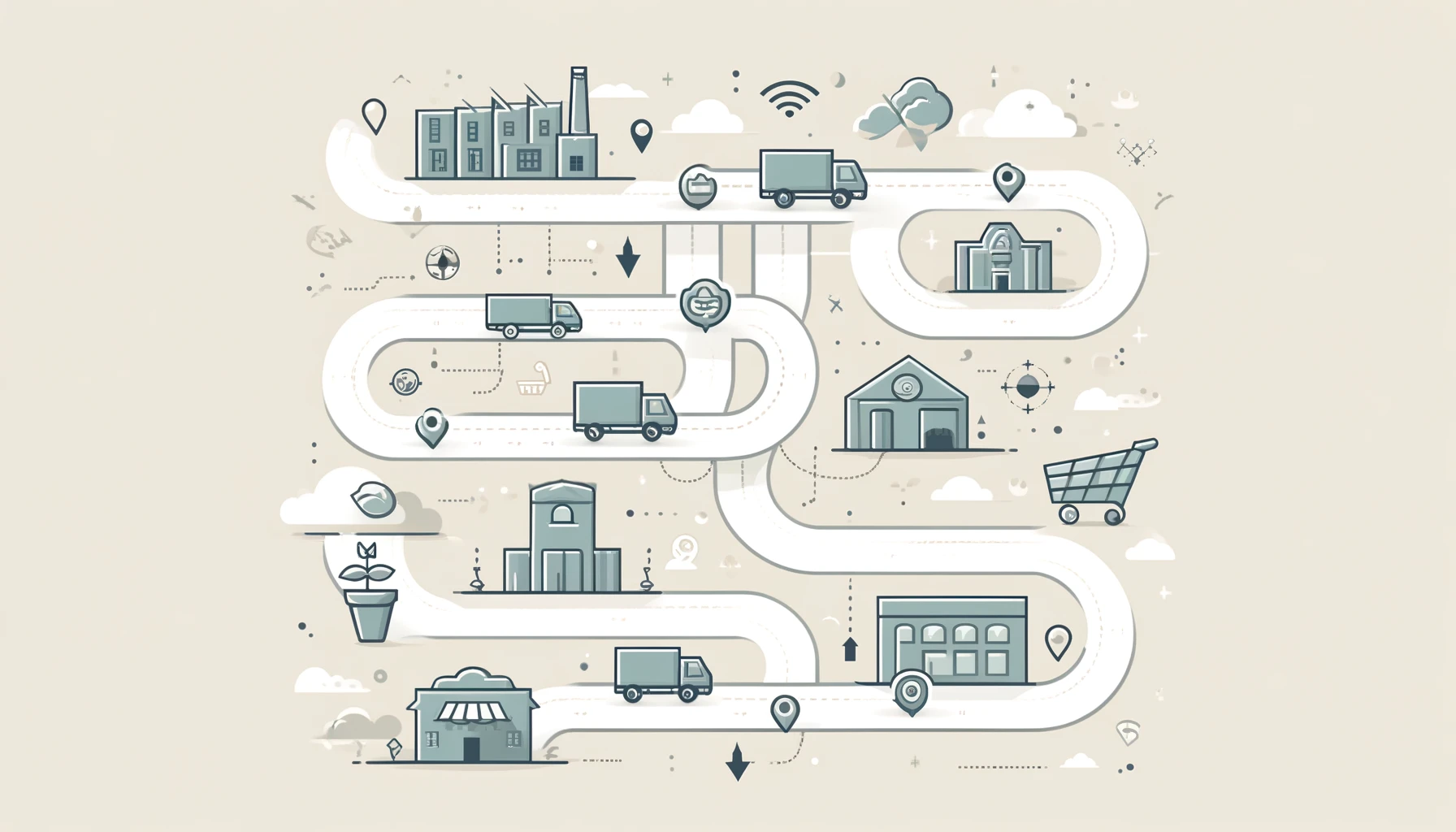
Remember, the goal of streamlined logistics is to create a smooth, responsive, and adaptable supply chain. As you continue to refine your logistics strategy, you’ll discover that the journey towards operational excellence is continuous, but the rewards are well worth the effort.
A Beginner’s Guide to Supply Chain Coordination
Embarking on the journey of supply chain coordination can seem daunting, but it’s a pivotal step towards achieving streamlined operations. Coordination is the backbone that connects various parts of the supply chain, ensuring they work together harmoniously. Let’s unpack the essentials for beginners.
Understanding the Basics of Coordination
At its core, supply chain coordination is about aligning the goals and activities of all parties involved, from suppliers to customers. When these entities are synchronized, your business can respond more effectively to market demands and operational challenges.
Coordination Fundamentals
- Shared Objectives: Establishing common goals across the supply chain.
- Communication: Open and transparent dialogue between stakeholders.
- Collaboration: Joint efforts to tackle challenges and seize opportunities.
Building Strong Relationships
The strength of your supply chain often hinges on the relationships you build with partners. Trust and mutual understanding pave the way for better collaboration and problem-solving.
Relationship-Building Strategies
- Regular Meetings: To stay connected and address issues promptly.
- Joint Planning: Working together on forecasts, promotions, and inventory management.
Leveraging Technology for Enhanced Coordination
In this digital era, harnessing technology is non-negotiable for effective supply chain coordination. Tools like CRM for sales and AI ERP systems can significantly improve information sharing and decision-making.
Technological Tools
- Supply Chain Management Software: For real-time visibility and analytics.
- Collaborative Platforms: To facilitate joint decision-making and project management.
Measuring Coordination Success
To ensure your coordination efforts are on track, you need to measure success. This involves monitoring specific metrics that reflect the harmony and efficiency of your supply chain.
| Metric | Before Coordination | After Coordination | Improvement |
|---|---|---|---|
| Lead Time | High |
Reduced |
Enhanced agility |
| Inventory Levels | Excess |
Optimized |
Reduced waste |
| Customer Satisfaction | Variable |
High |
Increased loyalty |
By embracing these beginner-friendly concepts and committing to continuous improvement, you’ll lay the groundwork for a resilient and dynamic supply chain. Coordination is not a one-time task; it’s an ongoing pursuit of excellence that can yield significant benefits for your business.
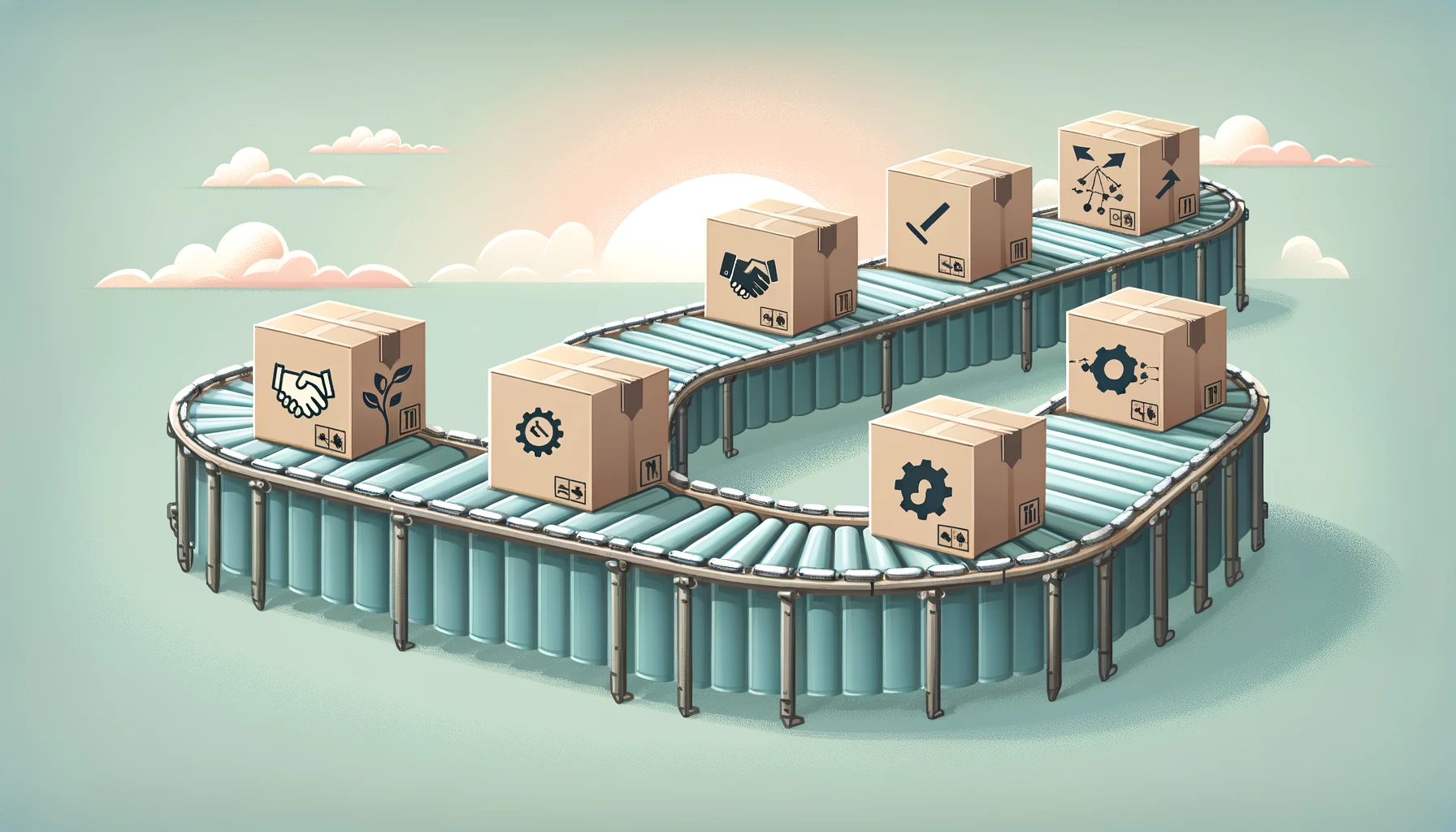
Dive into supply chain coordination with confidence, knowing that it’s a powerful lever for boosting efficiency, reducing costs, and enhancing customer satisfaction. Your strategic efforts will not only streamline your supply chain but also fortify your business against the ever-changing tides of the market.
Real-World Success Stories of Efficient Distribution Systems
Efficient distribution systems are the lifeblood of successful businesses across various industries. By examining real-world success stories, we can glean valuable insights into what makes a distribution system not just functional, but exceptional.
Case Study Highlights
One of the most telling success stories comes from a major online retailer known for its lightning-fast delivery and vast product range. This company revolutionized distribution by implementing advanced robotics in their warehouses, which allowed for rapid picking and packing processes. The integration of AI task managers further optimized workflows, leading to a staggering improvement in order fulfillment times.
Another inspiring example is a global electronics manufacturer that transformed its distribution strategy by centralizing inventory management. They used multichannel order managers to synchronize stock levels across multiple warehouses, which drastically reduced overstocking and understocking issues. The result was a leaner inventory with better availability and reduced holding costs.
Impactful Strategies
These companies focused on key strategies such as:
- Automation: Implementing cutting-edge technology to speed up operations.
- Centralization: Streamlining inventory management for consistency.
- Customer Focus: Prioritizing the end-user experience in distribution planning.
Visualizing Success
To better understand the significant changes these companies underwent, let’s look at a table highlighting their achievements:
| Metric | Before Changes | After Changes | Impact |
|---|---|---|---|
| Order Fulfillment Speed | 48 hours | 2 hours | Dramatic Increase |
| Inventory Accuracy | 75% | 98% | Substantial Improvement |
| Customer Satisfaction | 80% | 95% | Notable Growth |
These success stories demonstrate the transformative power of a well-executed distribution strategy. By embracing innovation and striving for efficiency, companies can achieve remarkable results that resonate throughout their operations and customer base.
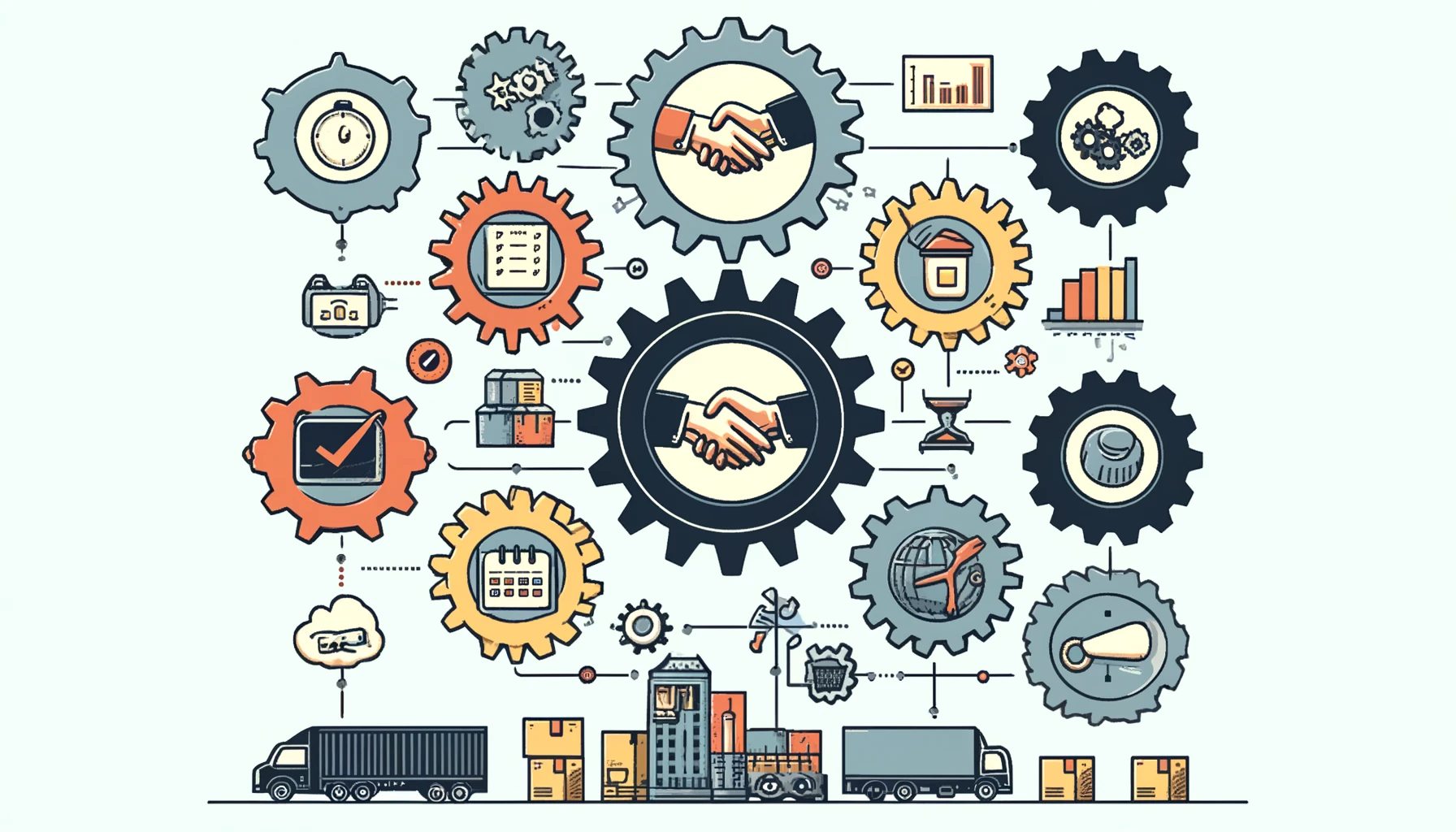
Adopting these proven approaches can help your company streamline your distribution system, leading to enhanced performance, reduced costs, and increased customer satisfaction. Let these success stories inspire you to reevaluate and energize your own distribution strategies for a more profitable and customer-centric future.
FAQs
What is a supply chain strategy?
A supply chain strategy defines how a business manages its resources and suppliers to deliver products and services to customers efficiently.
Why is supply chain strategy important?
It's crucial for cost reduction, enhancing customer satisfaction, and staying competitive in the market by ensuring timely and efficient product delivery.
What are the key elements of a supply chain strategy?
It includes demand planning, sourcing, production, delivery logistics, and the management of relationships with suppliers and customers.
How does technology impact supply chain strategy?
Technology streamlines operations, improves data accuracy, and enhances communication across the supply chain, leading to better decision-making.
Can a strong supply chain strategy improve profitability?
Yes, by optimizing processes and reducing waste, a well-executed supply chain strategy can lead to significant cost savings and increased profitability.
Read more about low-code platform ozma.io
Strategic Supply Chain Optimization Techniques
Strategic Supply Chain Management: Key Trends & Insights





